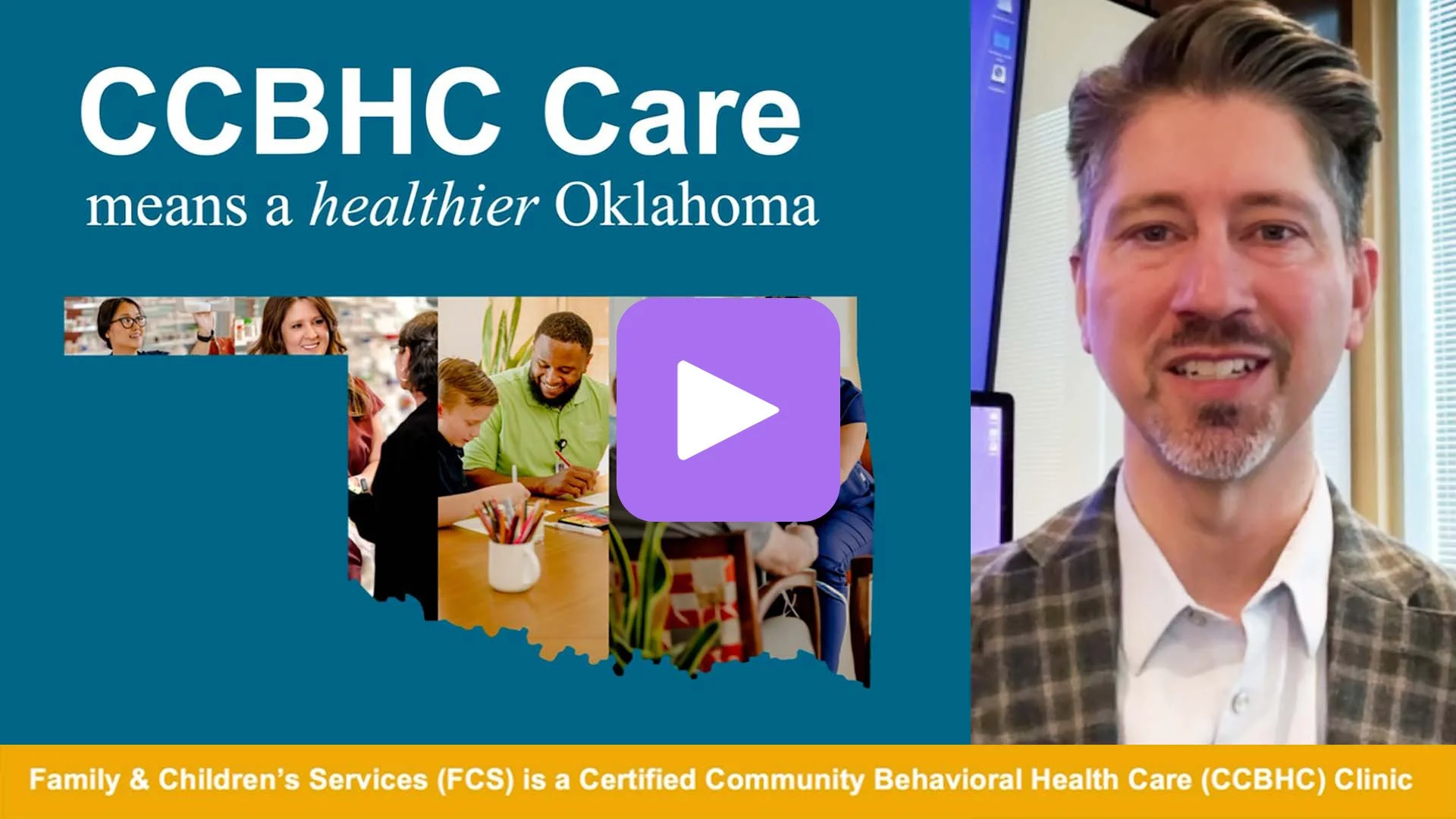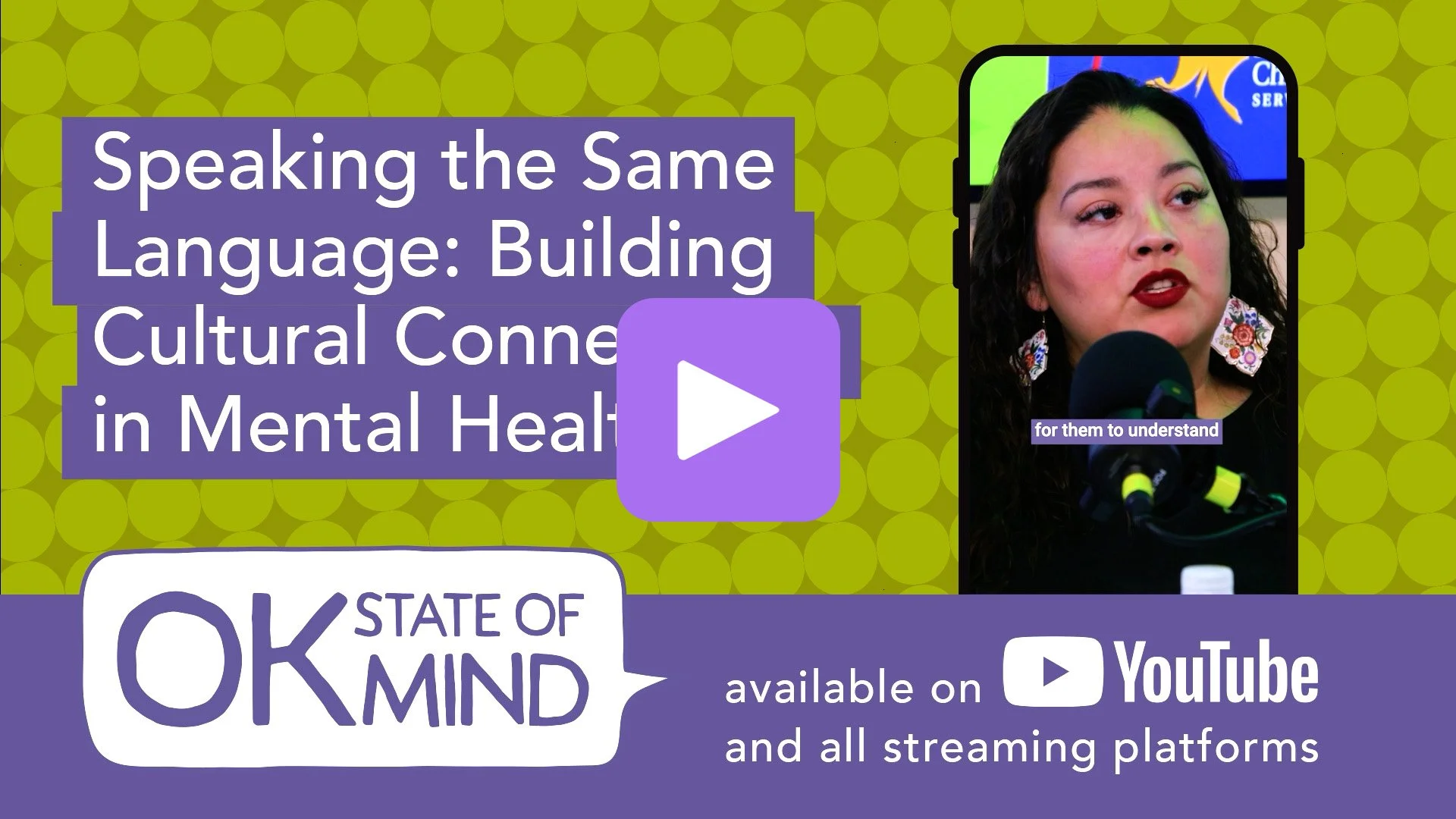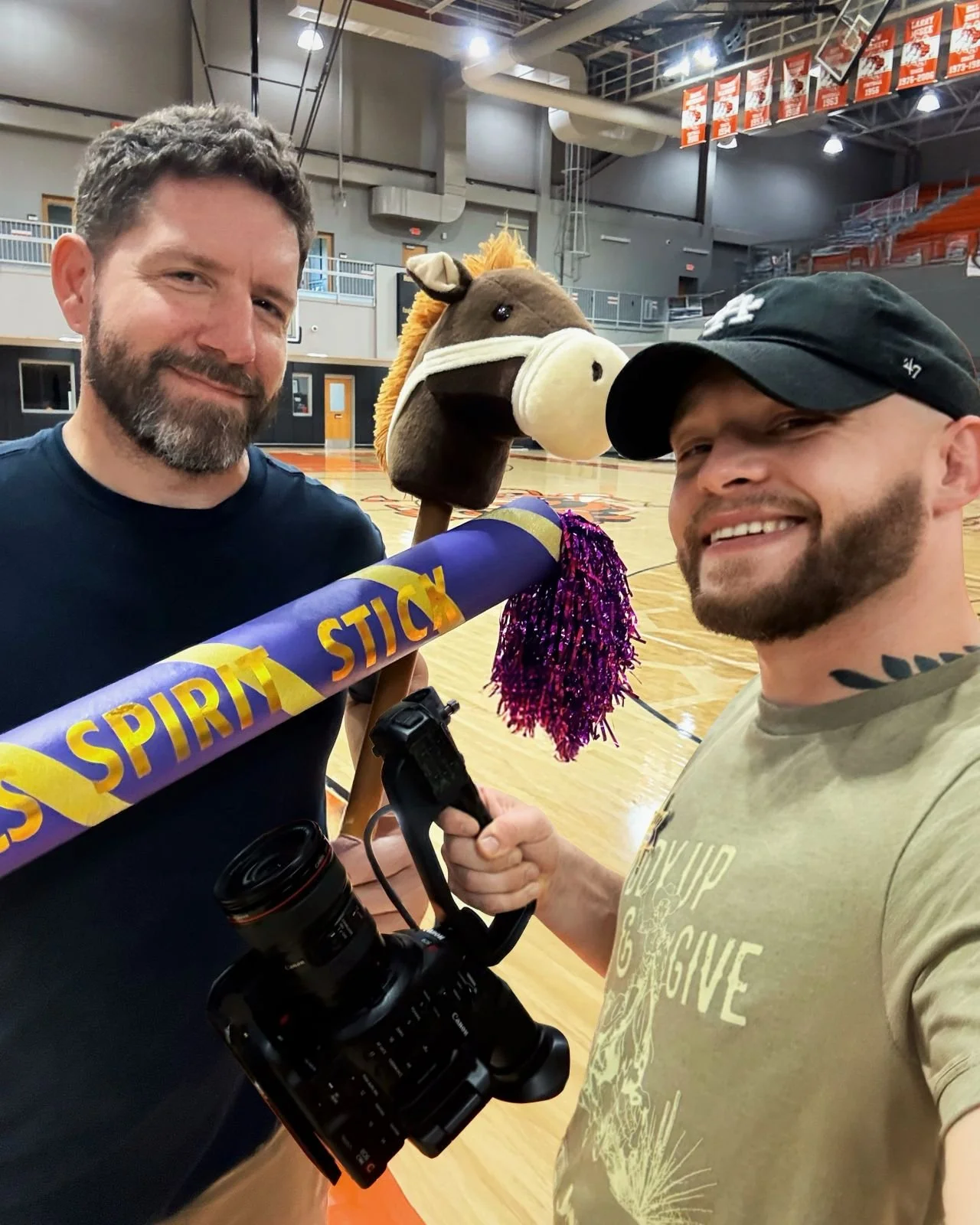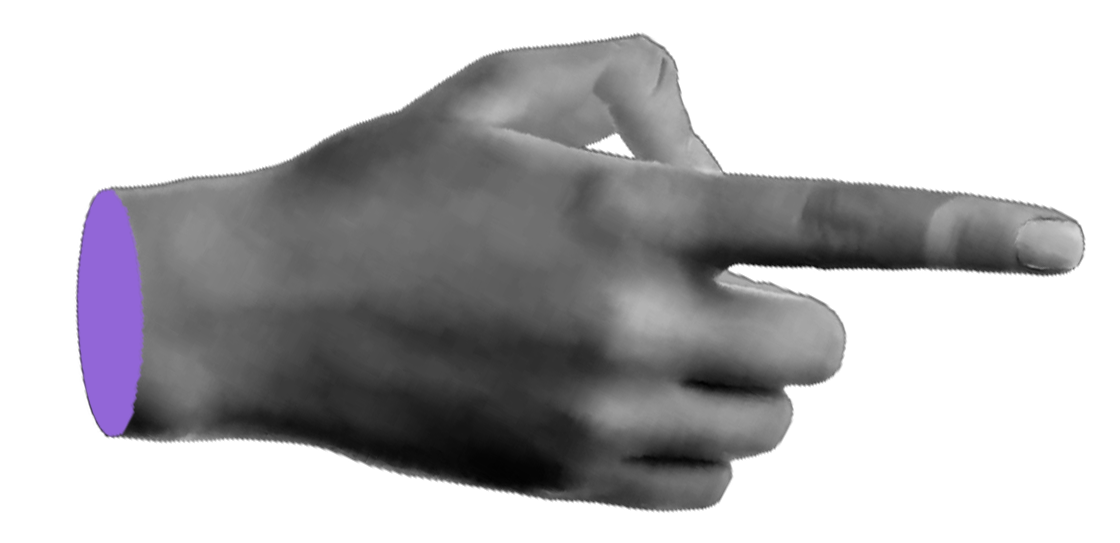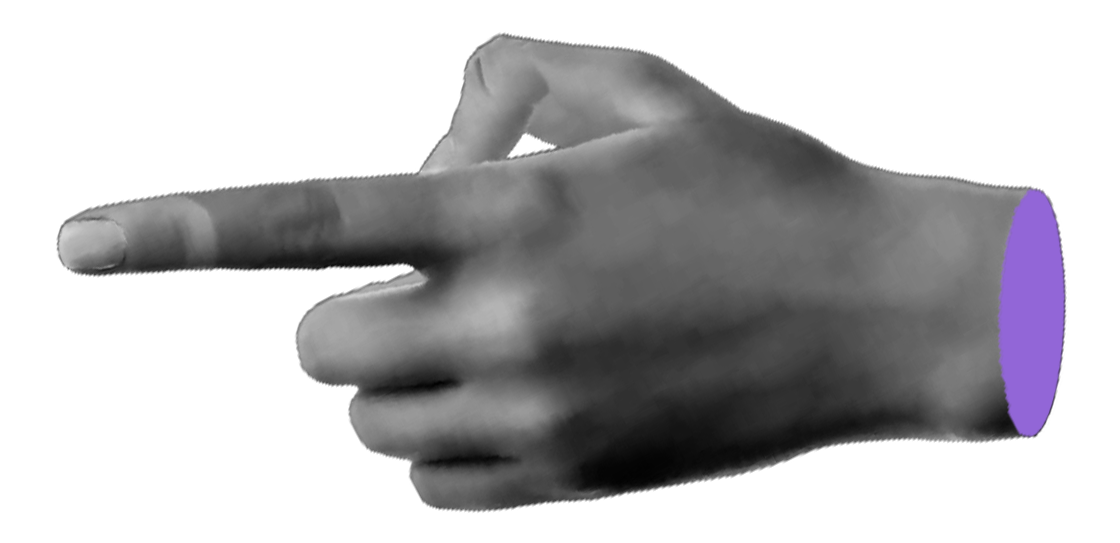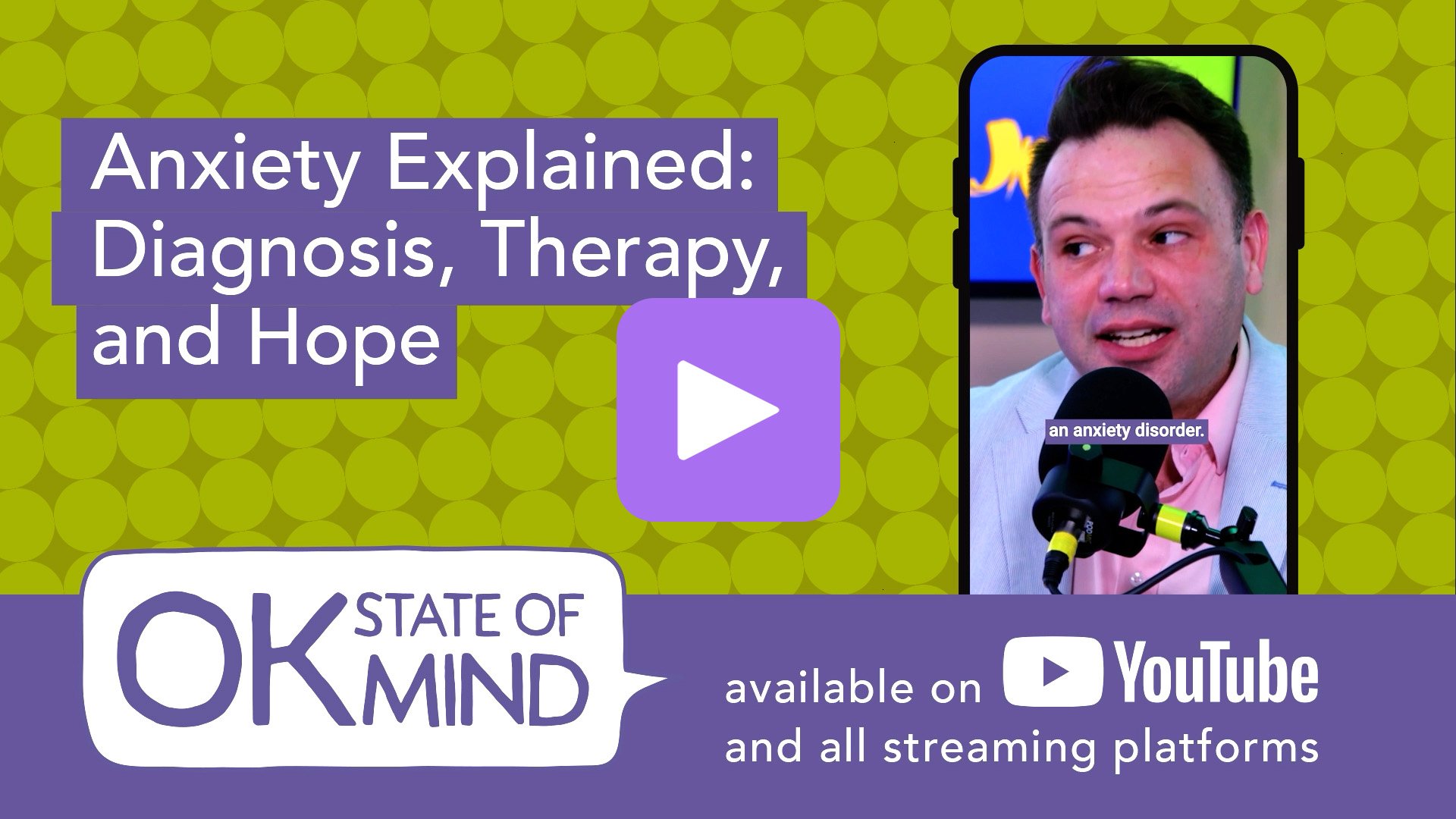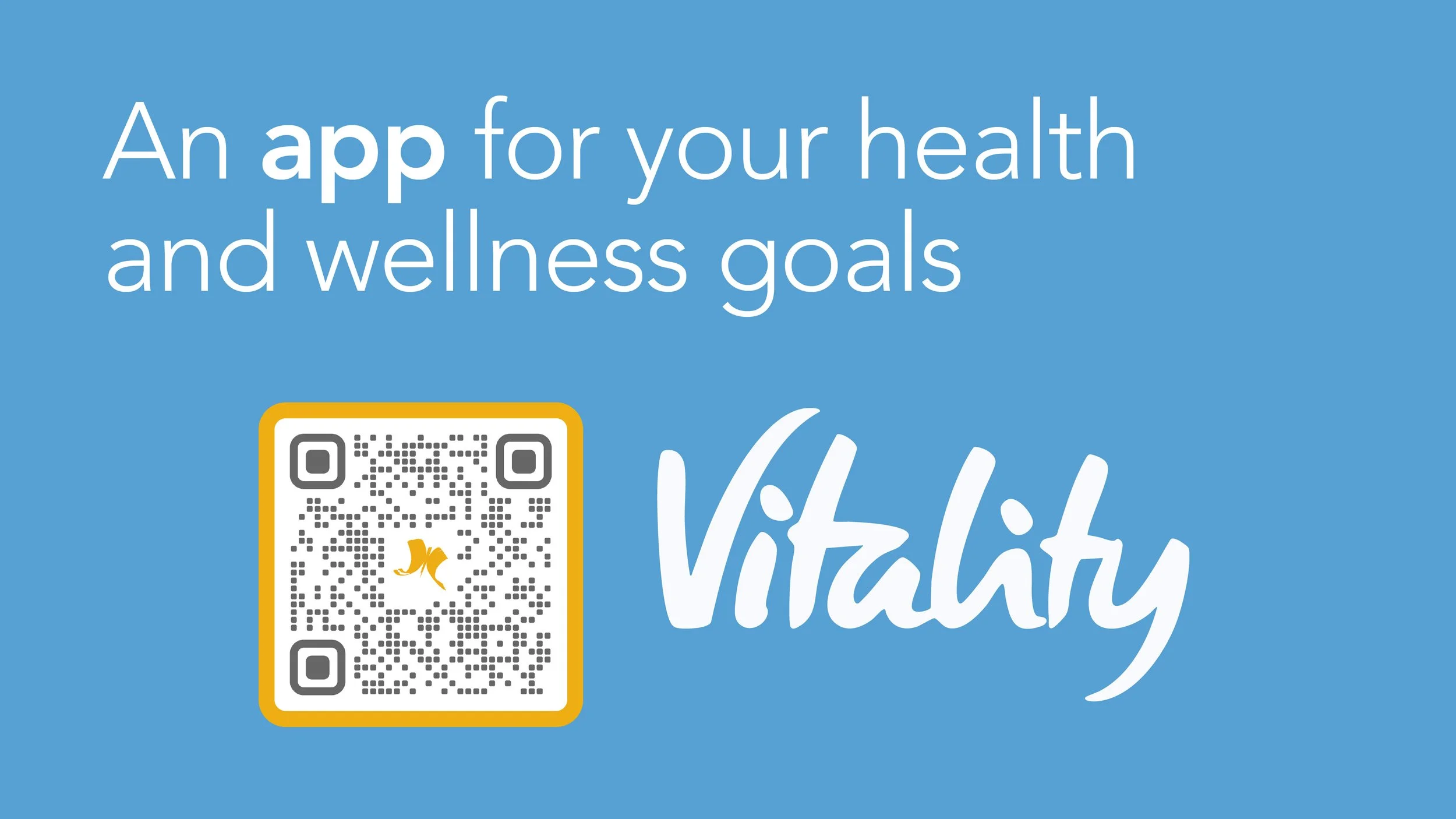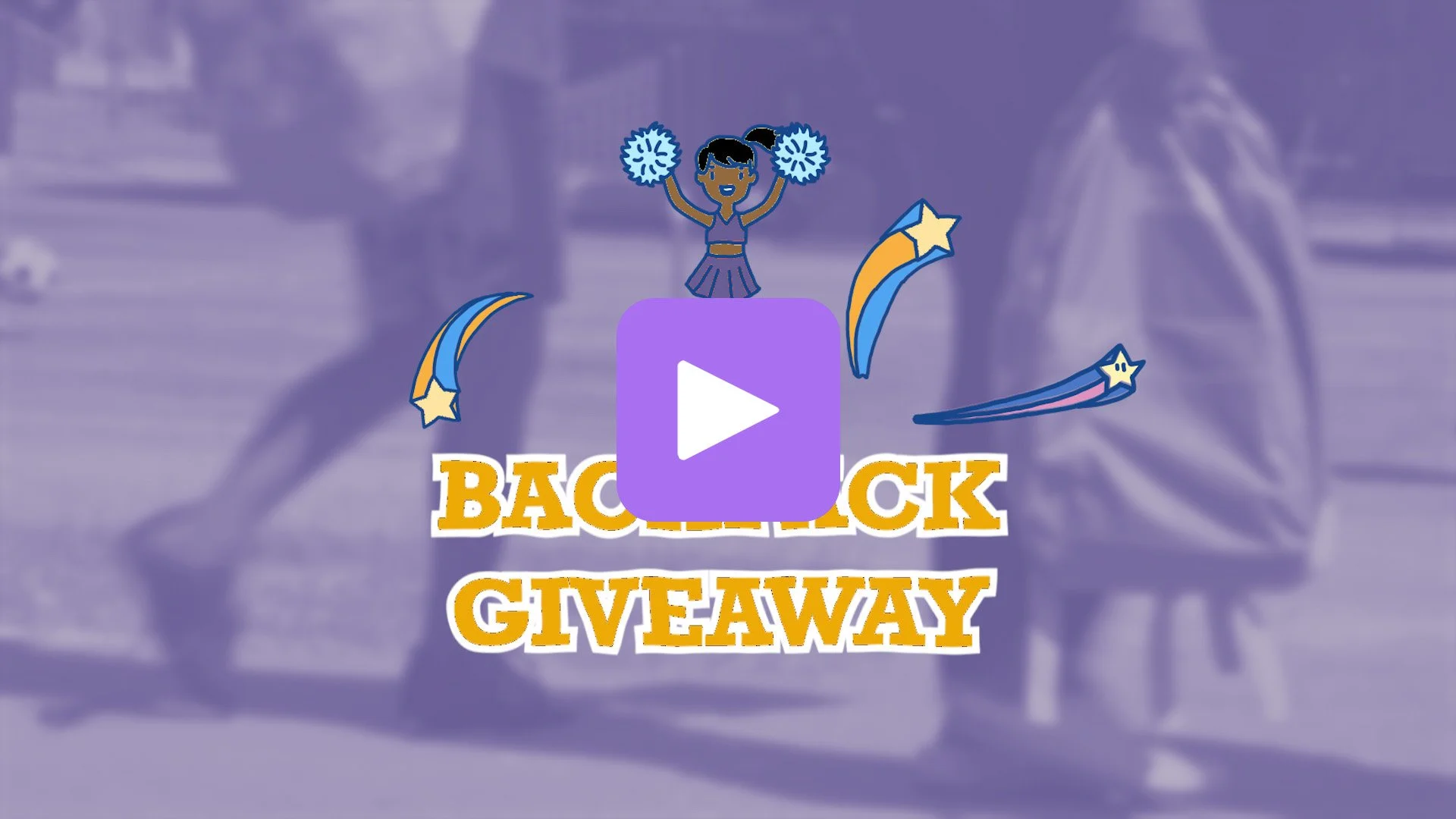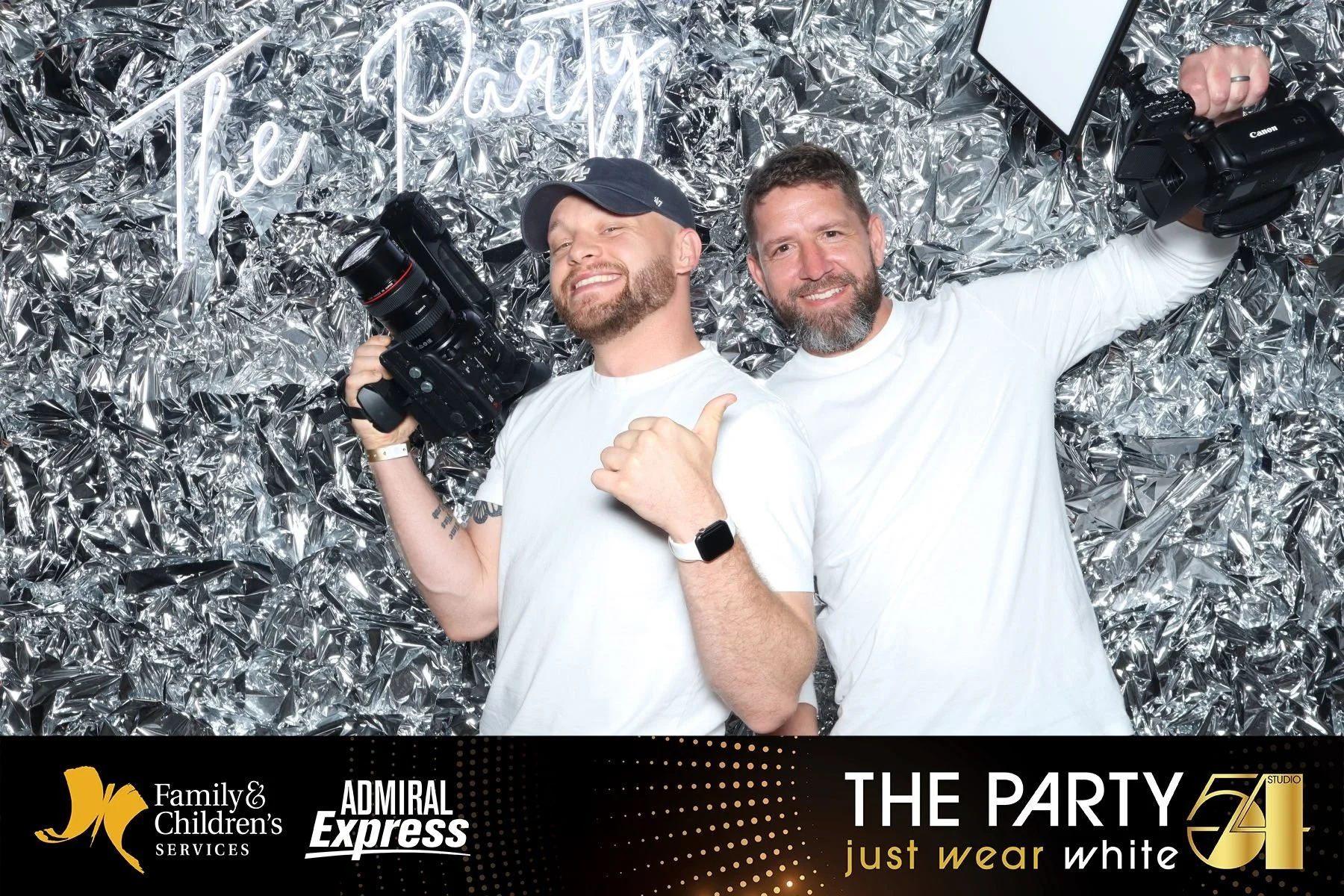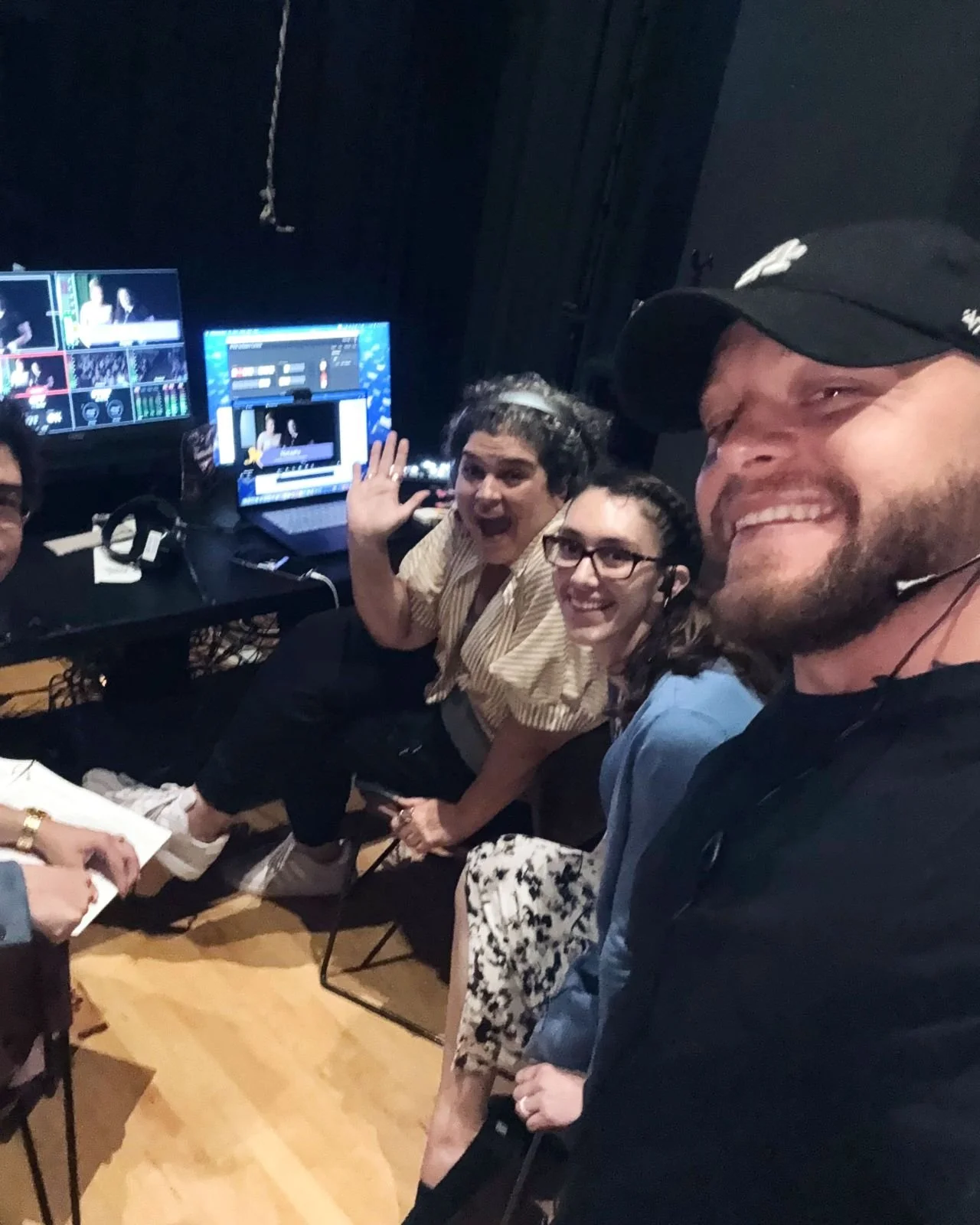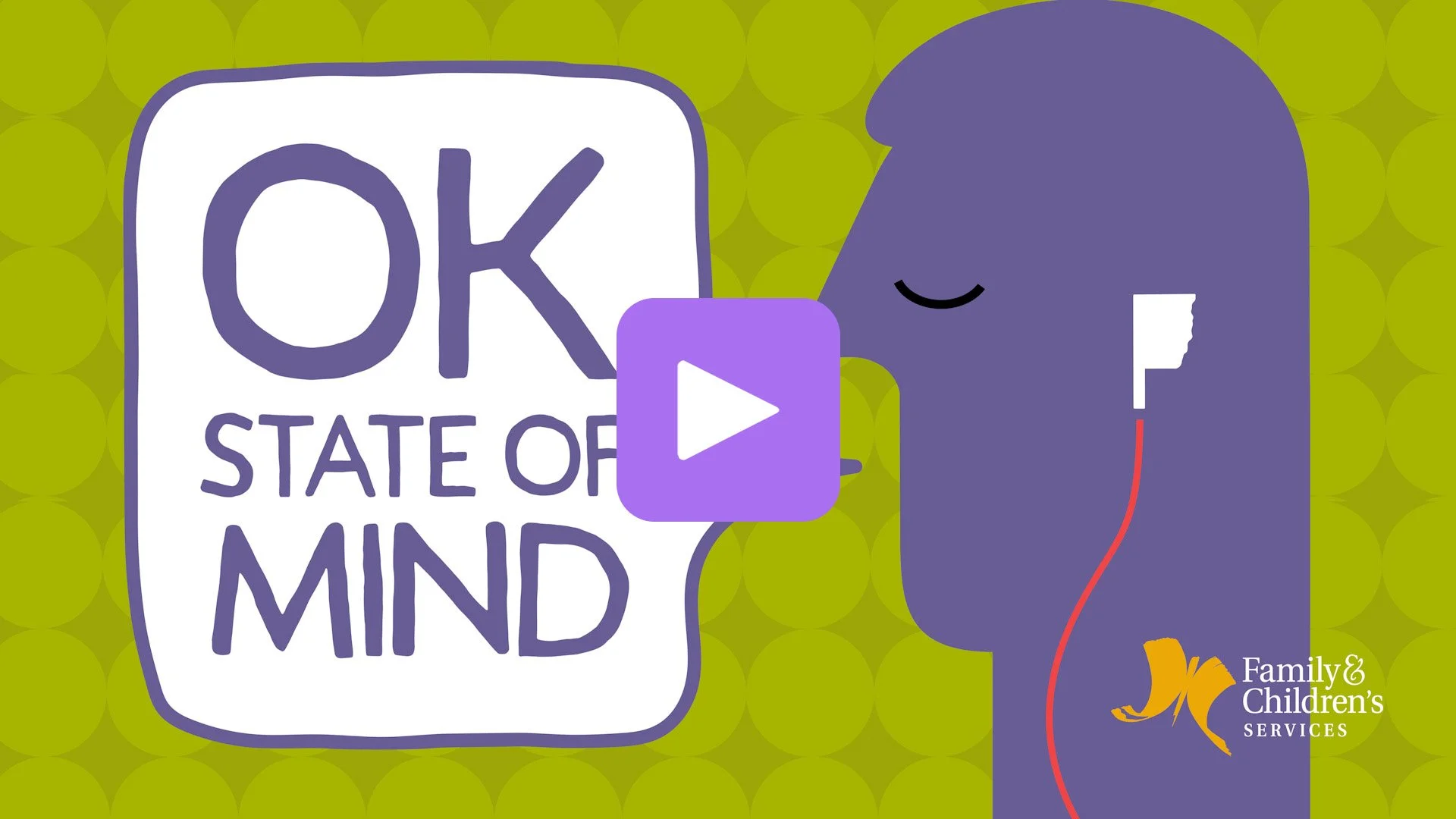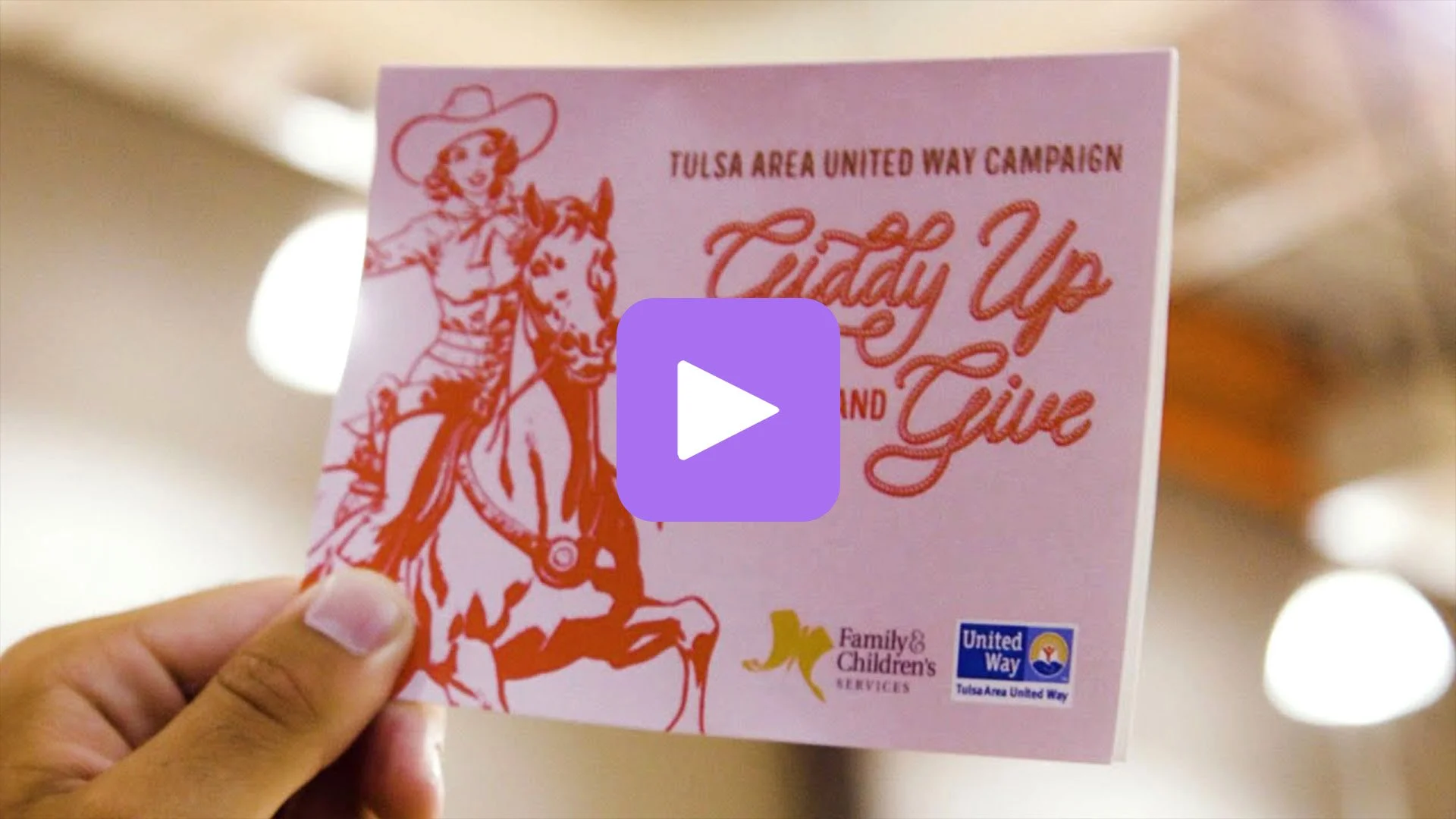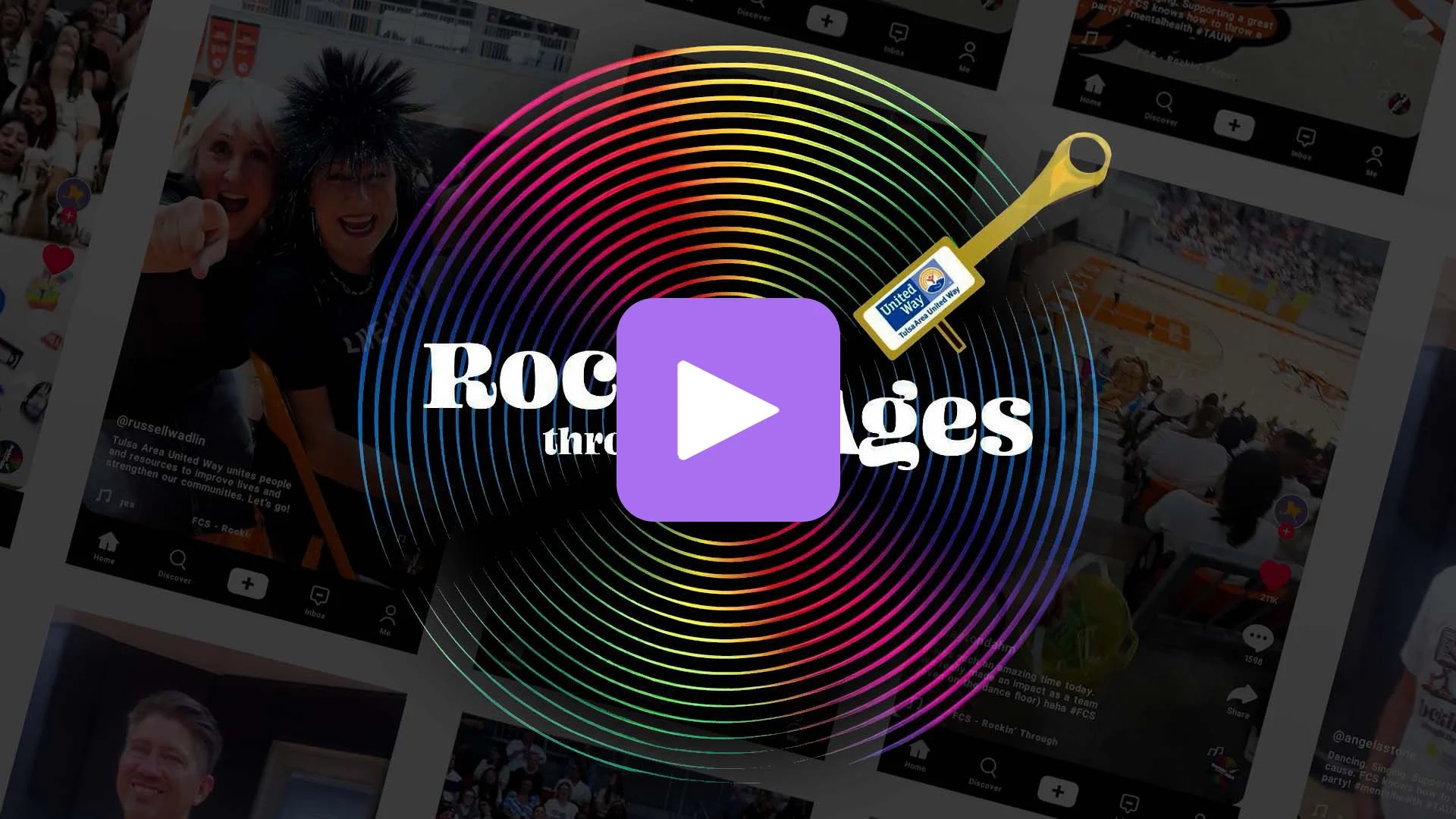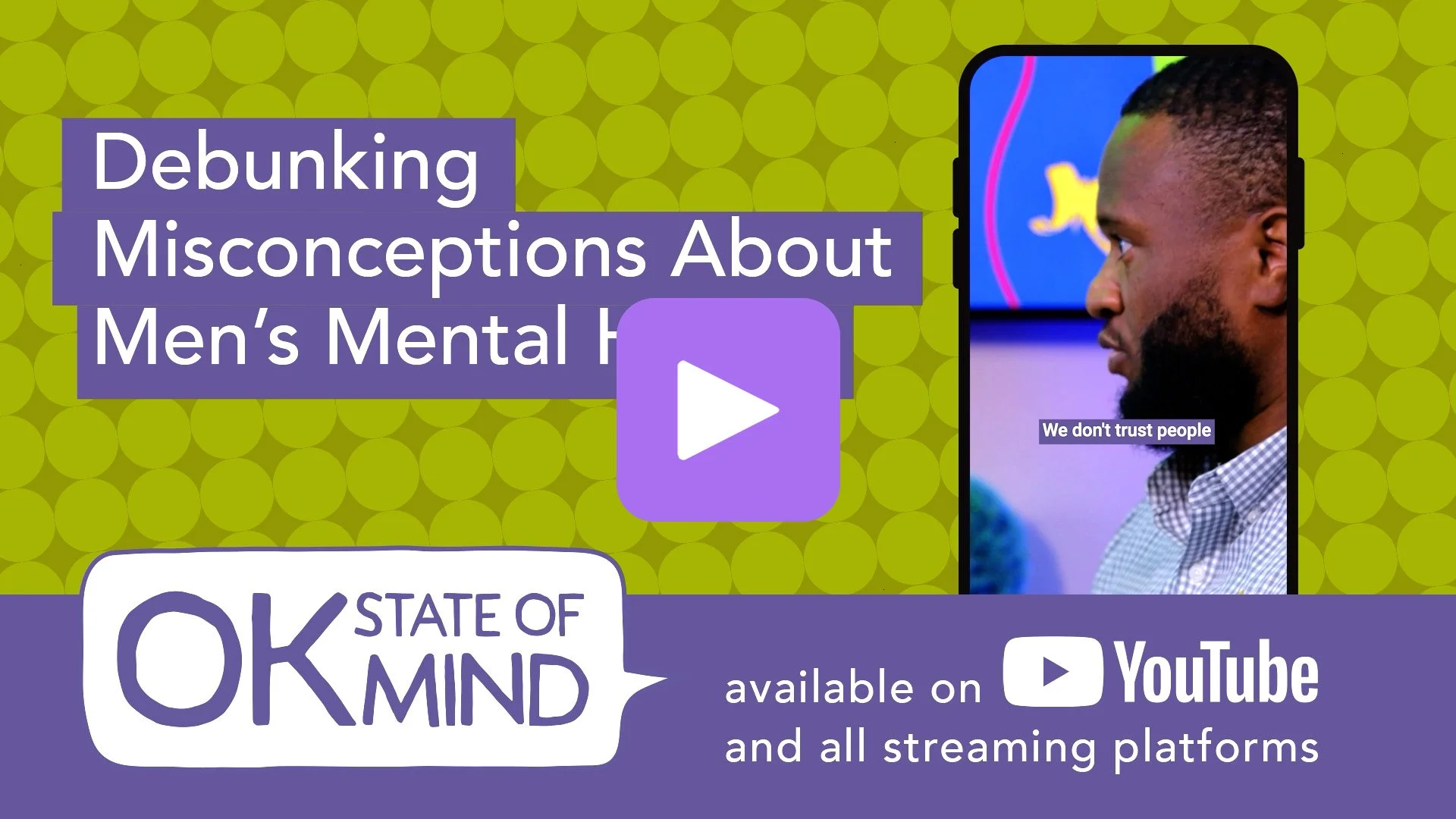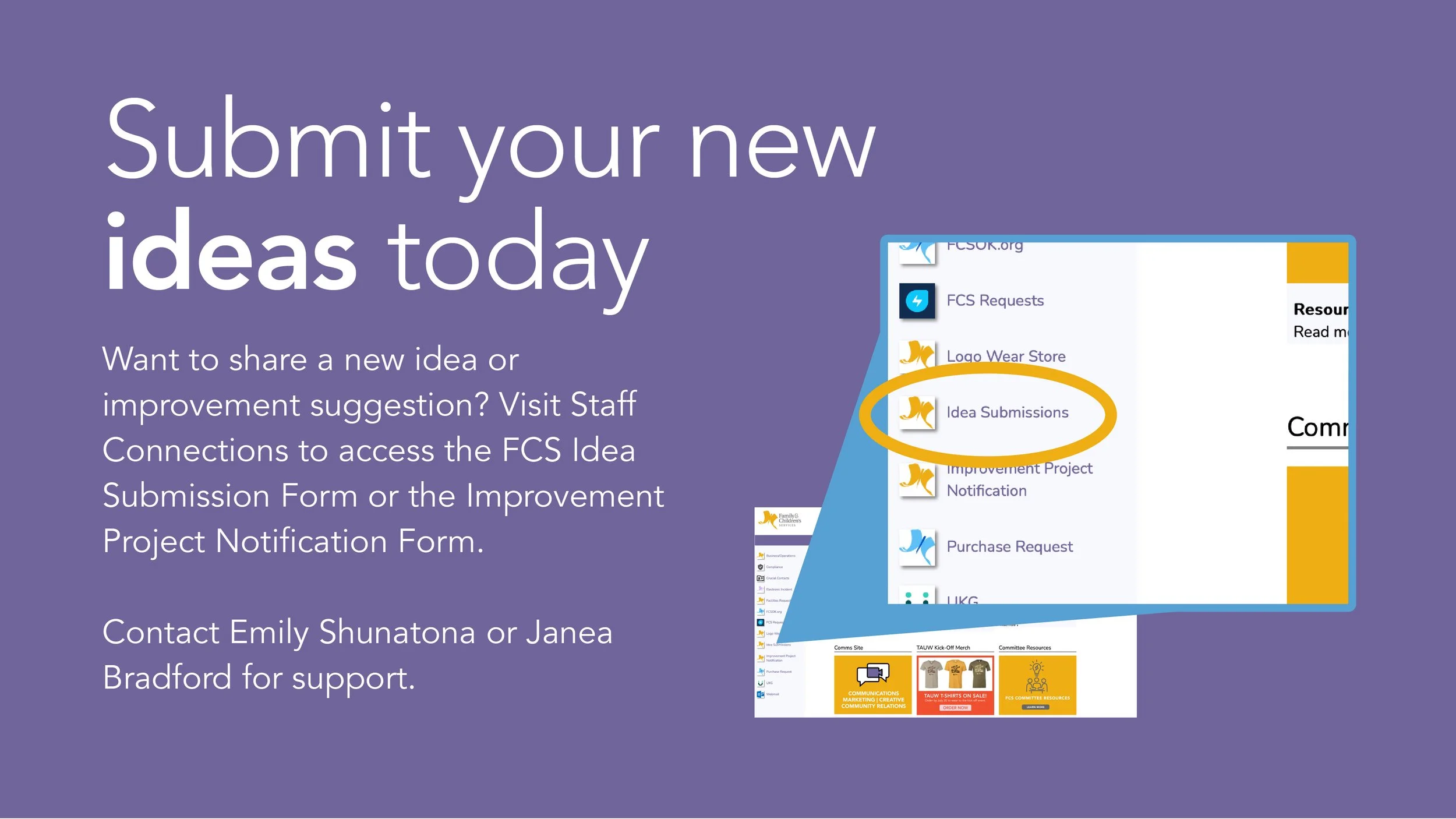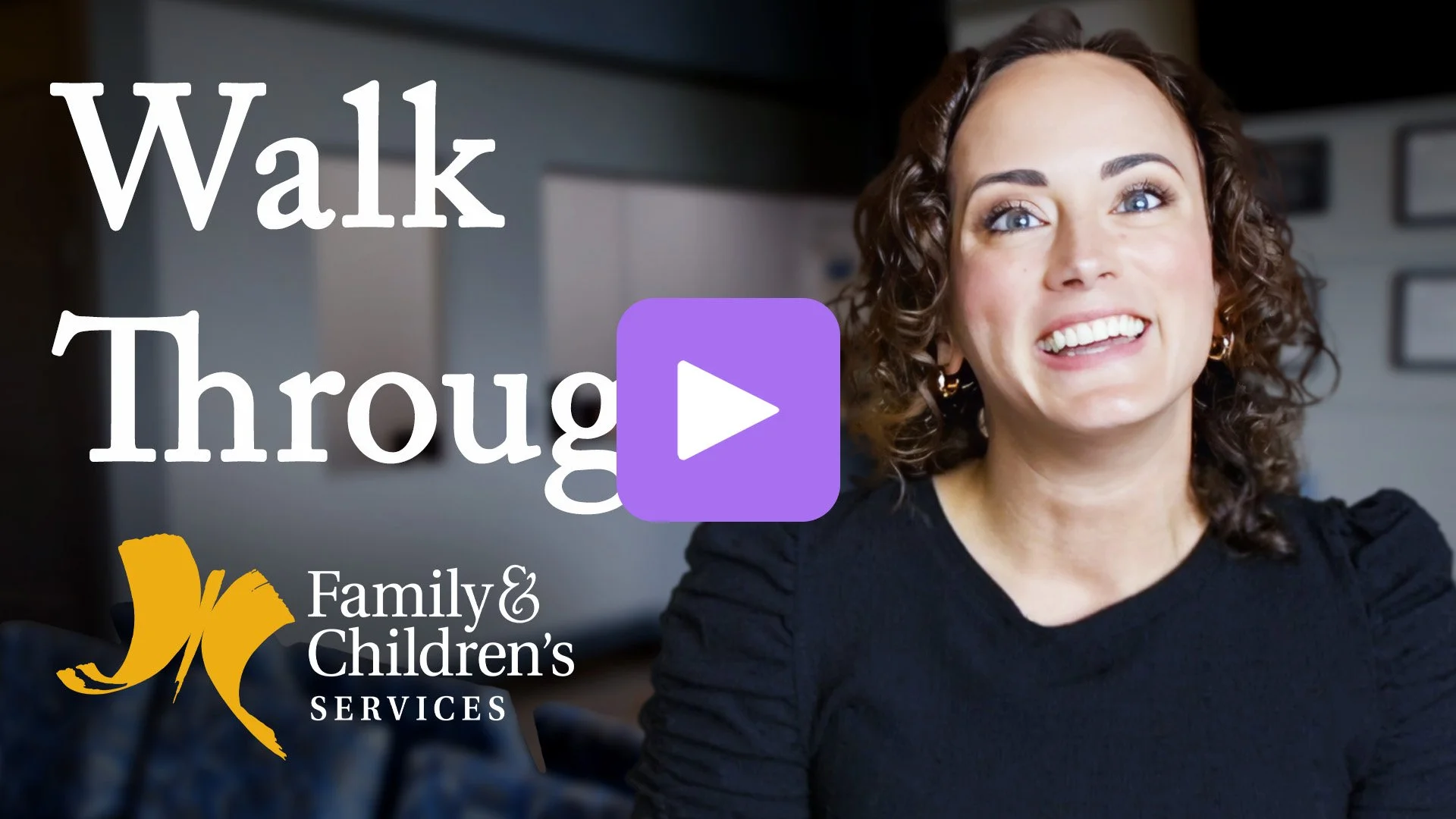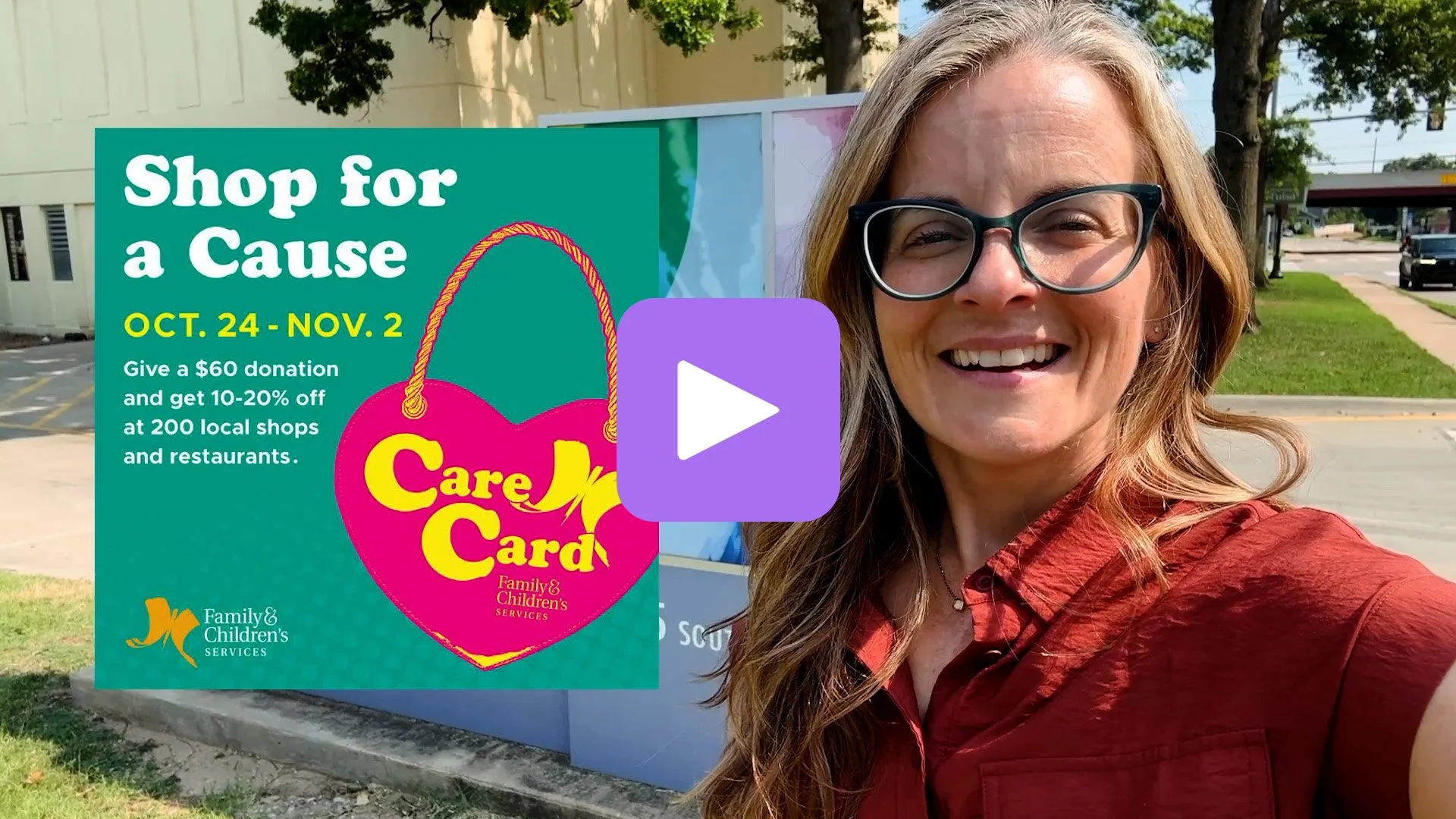Meeting the Moment of Mental Health and More.
Client: Family & Children’s Services
Role: Multimedia Design Manager
Services: Video Production, Graphic Design, Brand Development, Marketing/Communications Manager
Location: Tulsa, OK
Contract Length: June 2024 - Present
Working at Family & Children’s Services feels like a natural alignment — the skills I’ve spent years developing finally have the right container. Here, I help translate complex behavioral-health work into consistent, scalable communication. This agency has supported Tulsa for generations, and I’m helping strengthen that legacy by building the production infrastructure that keeps the message clear, accessible, and repeatable. The mission is ongoing, and my role is to help it carry farther.
You’ve come to the right place.
Family & Children’s Services (FCS) is Oklahoma’s largest non-profit behavioral health center, serving thousands of Tulsans each year. But “behavioral health” doesn’t tell the whole story. Their approach looks at the full social determinants of health that shape someone’s ability to get better. Food security. Safe housing. Addiction. Incarceration. Therapy. Physical healthcare. When those pieces are shaky, a person’s mental health becomes harder to manage. FCS builds expensive programs that stabilize the foundation so people can heal for real.
Their mission is built around access to whole-person care. There’s no “typical” plan, because people aren’t typical. FCS walks with clients from the moment they reach out and keeps helping as their needs evolve. Care doesn’t end when the crisis does — it continues until the foundation is strong.
My role translates this complex, deeply human work into scalable communication systems and builds creative content that connects. Because when people understand the message of what’s possible, more of them are impacted.
104
Years Operational
72
Agency Programs
30,000
Annual Clients
Before I joined, FCS already had what most nonprofits only dream of — size, trust, and an ecosystem of care that followed people from crisis through recovery. But with more than 70 programs operating across Tulsa, the organization looked and sounded different depending on where you entered. Those differences were natural, but they made it hard for clients, partners, and even staff to see the bigger picture of whole-person care.
The real challenge was clarity. Individual programs knew their audience, but agency-wide storytelling hadn’t caught up. The opportunity wasn’t to shrink the complexity — it was to organize it. By building shared systems for brand language, content, and visual identity, we could show how every resource, from therapy to housing to school-based care, connected into a single story of healing.
-
Unify 70+ programs under one cohesive brand narrative across all marketing channels.
Translate complex social determinants of health into messaging that people can understand quickly.
Shift internal culture toward scalable, repeatable content workflows rather than one-off assets.
-
Small MarComm department operating on defined budget typical of nonprofit behavioral health.
Strict HIPPA privacy and confidentiality requirements.
Sensitive cultural, political, and emotional topics require careful messaging for varying audiences.
-
Expand storytelling capabilities by reimagining marketing channels and leveraging first-ever production studio to create repeatable content pipelines.
Generate consistently high-quality content to influence fundraising and establish subject matter expertise.
Position FCS as a national model for how production processes can support community mental health.
Your next step is to be here.
On paper, I’m the Multimedia Design Manager. That means on any given day, I’m equal parts video producer, graphic designer, email newsletter copywriter, webpage developer, studio architect, and creative strategist. If it has pixels or storytelling potential, it likely came across my desk — and probably left with color grading, multiple reviews, and an iconic yellow butterfly.
I would be lying to say I do this all alone. My partner in crime is Russell Wadlin, a passionately process-oriented creative who thinks in pure brand DNA. Our professional strengths align almost as well as our stories from the battle rap/BMX glory days. Grateful to be on his team.
-
Producing end-to-end video content, from directing to final edit.
Designing branded graphics for events, campaigns, and social channels.
Building scalable systems, templates, and visual standards across programs.
Developing high-impact presentation assets for C-Suite and stakeholders.
Writing and optimizing email, webpage, and digital content for internal departments.
Improving creative workflows, studio processes, and content delivery.
Russell
Me
“Clayton doesn’t just make great content; he builds the processes that make great content repeatable. That’s rare.”
Russell Wadlin • Multimedia Design Manager at FCS
Reimagining what’s possible.
Before creating anything, I needed to understand how FCS actually serves people — and how more than 70 programs communicate their work under one agency mission.
What I found was powerful but fragmented. With dozens of programs and audiences, storytelling wasn’t aligned under one roof. So I focused on building shared systems: an in-house production studio, unified content pipelines, and cross-program collaboration. Those structures are now helping us break down silos and represent the agency as one cohesive brand with a collective voice.
Studio Build Out
The FCS production studio started as a simple need: a controlled space to produce consistent, scalable content. After early success with OK State of Mind, leadership backed the idea, and we transformed an abandoned medical records room into a full creative hub. I worked with Facilities, IT, and Executive Leadership to manage layout, equipment needs, and budget—turning the space into three core zones: a dual-monitor broadcast station for trainings and addresses; a styled podcast set for roundtable conversations; and a flexible “Auxiliary Room” used for staff headshots, storage, and everything else. The result dramatically increased our capacity, sped up turnaround times, and allowed us to batch work intelligently. The studio now anchors MarComm’s workflow and helps FCS tell clearer, more human stories at scale.
Press the Red Button
-
At FCS, video isn’t just content — it’s access. Every shoot, whether for OK State of Mind, location commercials, or fundraiser event recaps, helps break down barriers around mental health by showing real people and real care in motion. My work has centered on building a system that allows us to create at scale. Repeatable pre-production workflows, modular studio infrastructure, and visual storytelling techniques push us creatively to tie our content together. The consistent presence of FCS videos help audiences understand services and feel connected to the mission.
-
Audio has become a quiet powerhouse in the FCS communication toolkit. From radio campaigns to podcast messaging, high-quality sound gives us a way to reach audiences who may never scroll past our videos or walk into one of our buildings. I’ve helped build consistent audio workflows that support brand voice. These recordings strengthen our mission by meeting people where they already are — in their cars, on daily walks, or during morning routines — making mental health guidance feel accessible and familiar. Audio is intimate; it builds trust. And for many listeners, it becomes the first step toward care.
-
Photography has quickly become an essential layer of our content ecosystem — offering a flexible, lower-lift way to capture real moments across programs, events, and client-facing spaces. Simply put, great photos help people see the impact of whole-person care. We also stood up an in-house headshot process inside our auxiliary studio, where we now produce professional-grade portraits for staff across 1,400+ employees. It’s efficient, cost-saving, and deeply aligned with our mission: when people feel represented with dignity, they feel connected to the work. Photography lets us honor our team members and tell stories that might never make it into a video — but still matter just as much.
Women in Recovery
Women in Recovery (WIR) is one of FCS’s most powerful programs — a nationally recognized alternative to incarceration for women facing long prison sentences. Backed by the George Kaiser Family Foundation, WIR provides mental health treatment, substance use recovery, workforce training, and family reunification to help women rebuild their lives. The outcomes speak for themselves: generational cycles of incarceration are broken, mothers return to their children, and Tulsa communities become safer.
I supported one of WIR’s most successful graduation ceremonies and was later nominated to the WIR Graduation Committee. Now, I help reimagine how the program celebrates its participants — from live-stream access for loved ones and stakeholders to upgraded branding, run-of-show improvements, and thoughtful storytelling. These events are more than milestones — they’re proof that recovery is real.
“Clayton has a gift for capturing authenticity. Our program videos finally reflect the dignity, struggle, and triumph of the people we serve.”
Tom Taylor • Chief Development Officer at FCS
Storytelling with Purpose
Creating at FCS isn’t just about production — it is about supporting someone’s journey through care. Each piece is a bridge: helping a client understand a program, a therapist share expertise, or a donor see the impact. Developing a compassionate content ecosystem is a modern essential to access.
Video Productions
-
This text is a temporary placeholder and will be replaced with final content soon. It exists only to maintain layout, spacing, and structure during development.
-
This text is a temporary placeholder and will be replaced with final content soon. It exists only to maintain layout, spacing, and structure during development.
-
This text is a temporary placeholder and will be replaced with final content soon. It exists only to maintain layout, spacing, and structure during development.
Graphic Designs
-
This text is a temporary placeholder and will be replaced with final content soon. It exists only to maintain layout, spacing, and structure during development.
-
This text is a temporary placeholder and will be replaced with final content soon. It exists only to maintain layout, spacing, and structure during development.
-
This text is a temporary placeholder and will be replaced with final content soon. It exists only to maintain layout, spacing, and structure during development.
Fundraiser Events
-
This text is a temporary placeholder and will be replaced with final content soon. It exists only to maintain layout, spacing, and structure during development.
-
This text is a temporary placeholder and will be replaced with final content soon. It exists only to maintain layout, spacing, and structure during development.
-
This text is a temporary placeholder and will be replaced with final content soon. It exists only to maintain layout, spacing, and structure during development.
Communication Outreach
-
This text is a temporary placeholder and will be replaced with final content soon. It exists only to maintain layout, spacing, and structure during development.
-
This text is a temporary placeholder and will be replaced with final content soon. It exists only to maintain layout, spacing, and structure during development.
-
This text is a temporary placeholder and will be replaced with final content soon. It exists only to maintain layout, spacing, and structure during development.
Growth you can feel.
In my time with Family & Children’s Services, the impact has looked a lot like the work we support — steady, meaningful progress layered over time. We strengthened brand cohesion across programs, streamlined production systems, and built creative infrastructure that now supports communications at scale. Even small early wins snowballed, helping departments break down long-standing silos and adopt unified messaging under one organizational voice.
Internally, new systems boosted collaboration and clarity. Externally, higher-quality storytelling helped reinforce FCS as Oklahoma’s behavioral health leader — not just through reach, but through resonance. And while the journey is ongoing, the foundation is set: modern creative systems, clearer processes, and a shared brand identity that strengthens by the day.
-
This text is a temporary placeholder and will be replaced with final content soon. It exists only to maintain layout, spacing, and structure during development.
-
Elevated brand perception in local and national startup ecosystems during resistant times.
Increased internal and external confidence in mission impact through content execution and impactful storytelling.
Contributed to diversity-forward positive community culture.
Before joining the team, the agency’s impact was undeniable, but its communication channels struggled to keep pace. Programs promoted their work independently, content output was limited, and there was no dedicated system for consistent storytelling or campaign development.
After establishing new production systems, centralized storytelling pipelines, and clearer brand alignment, creative work now feels intentional and connected. Departments collaborate more fluidly and the content ecosystem finally reflects the strength of the care delivered across Oklahoma.
Personal Takeaway
There’s something rare about finding a role where your personal history, skillset, and community roots converge. Working at Family & Children’s Services has been that intersection for me — a place where the language of my own mental-health journey and the tools I’ve spent a decade mastering finally feel pointed in the same direction. I came in knowing how to design, direct, and tell stories. But what grounded me here was seeing, firsthand, that those skills could translate into real-world support for the community I call home. In Tulsa, every era of my life feels present — the kid who loved art, the young adult who needed therapy, the creative who wanted his work to matter. All of it folds together here. And the more I create inside this space, the more certain I feel that my work isn’t just adjacent to the mission — it’s an active part of it.
The journey that brought me to FCS wouldn’t be complete without acknowledging one person: Dee Harris. She was my high-school teacher turned Chief Marketing Officer at FCS. More importantly, Dee was the first person who told me creativity could be a career. She helped put a camera in my hands before I could drive, encouraged me to follow my instincts, and modeled what it looked like to build a life around imagination. A decade later, after our personal and professional lives took us in many directions, I sent her a message. No guarantees — just a request to reconnect. That message led to opportunity. She hired me into the role I’ve always hoped existed — one where I could help shape how my city understands hope and healing. Dee eventually moved on to an equally noble role outside of FCS, but the torch she handed me is still burning. I don’t take that lightly.
This work hasn’t changed who I am. It’s clarified it.
Every project — every story told, every message systemized, every resource made visible — feels like a step deeper into the version of myself I’ve been building all along.
“Watching Clayton return to FCS as a creative leader has been a full-circle joy. He exceeded every expectation I had for him.”
Dee Harris • Chief Marketing Officer at FCS








